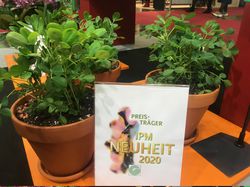 Peanuts: everybody knows them and (almost) everybody has eaten them. What's new is that you can now grow your own peanuts, whether planted directly in your garden or in a container on a balcony or terrace. For this purpose, our sister company Lubera in Switzerland tested South American local breeds in comparison to common cultivars from the United States. The aim was to find a varied assortment of peanuts which are particularly suitable for our changing climate. The following varieties have performed best across all evaluation points and at the same time offer a colourful diversity.
Peanuts: everybody knows them and (almost) everybody has eaten them. What's new is that you can now grow your own peanuts, whether planted directly in your garden or in a container on a balcony or terrace. For this purpose, our sister company Lubera in Switzerland tested South American local breeds in comparison to common cultivars from the United States. The aim was to find a varied assortment of peanuts which are particularly suitable for our changing climate. The following varieties have performed best across all evaluation points and at the same time offer a colourful diversity.
(Not) Just Peanuts® – a colourful diversity
The play of colours that the Lubera peanuts offer does not come from the pods, which literally bury their heads in the sand. The colour is in the seed coats. When peanuts are shelled, the sometimes very intense colour of the seed coats, which cover the actual 'nut', stands out immediately.
(Not) Just Peanuts® Justmore®
In direct comparison to other varieties, the Justmore® variety has up to 50% larger pods. Where the other varieties have on average about two nuts per pod, Justmore® has about three nuts and there are also a significantly higher number of pods with four nuts. The nuts have an attractive, dark red seed coat.
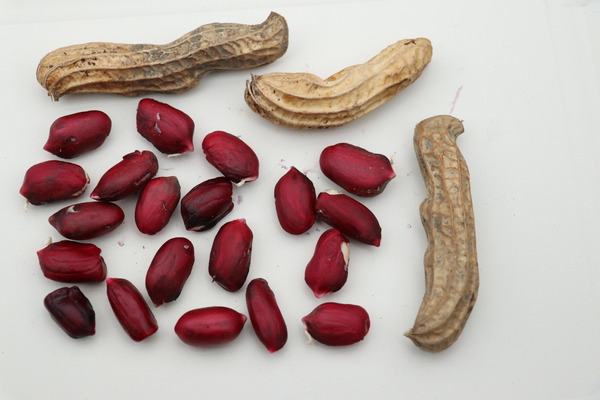
Picture: Peanut variety (Not) Just Peanuts® Justmore®
Short description:
- Pods/nuts: very large pods, with three nuts on average, a significant number of pods with four nuts; dark red seed coat
- Yield: overall slightly lower than Justpink® (the variety with the highest yield)
- Planting: from about mid-May to the beginning of June
- Harvest: from mid-September for early planting or early October for late planting
- Special features: high tolerance to harvesting late and damp weather; the foliage is still largely green when other varieties are already completely brown
(Not) Just Peanuts® Justpink®
The peanut variety Justpink® is the variety with the highest yields and our winner at the innovation showcase at the IPM 2020. With an average of about 100 pods per plant, this results in a yield of more than 200 nuts (per plant). With its pink to brown seed coat, Justpink® is the variety that comes closest to the standard varieties that can be bought in a bag.
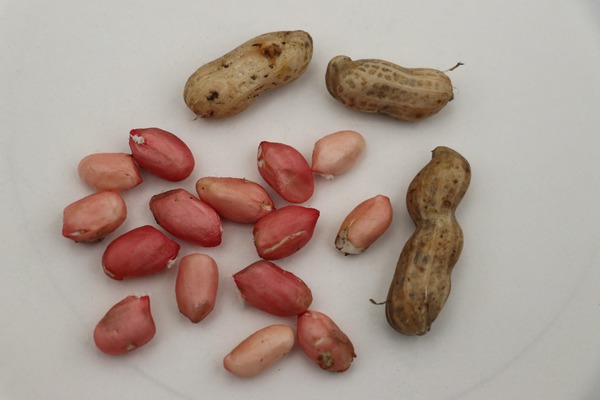
Picture: Peanut variety (Not) Just Peanuts® Justpink®
Short description:
- Pods/nuts: both the pods and the nuts in them are medium-sized; the nuts have a wonderfully pink-coloured seed coat
- Yield: very high yield due to a large number of pods
- Planting: at the beginning/middle of May
- Harvest: from about mid-September, when about 50% of the leaves are already brown
- Special features: very high yield due to the rather bushy growth, therefore there are more flowers close to the ground
(Not) Just Peanuts® Justblack®
The peanut variety Justblack® adds an extra colour to the Lubera peanut range with its dark red, almost black-coloured seed coat. Furthermore, this variety is above average in all criteria. Large pods with always almost exactly two medium-sized nuts. Each plant also fruits well and provides a high yield. In addition, Justblack®, just like Justmore®, can tolerate damp weather and a moister soil better.
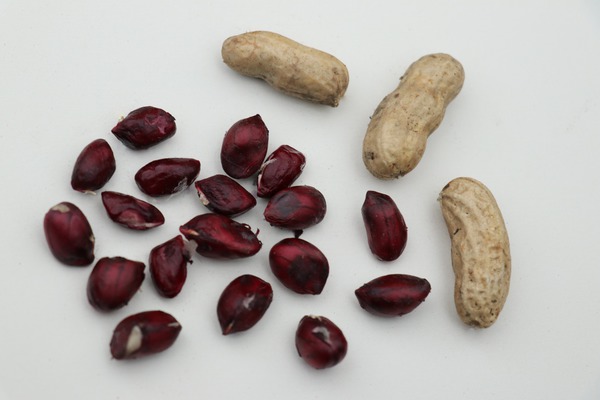
Picture: Peanut variety (Not) Just Peanuts® Justblack®
Short description:
- Pods/nuts: medium-sized to large pods, (almost) always with two nuts; dark red to black seed coat
- Yield: medium to high (70 - 80 pods/plant)
- Planting: early May to early June
- Harvest: early September to mid-October
- Special features: early planting and a late harvest increase the yield
(Not) Just Peanuts® Justbehappy®
The peanut variety Justbehappy® surprises with a very special colouring. The seed coat of this variety is strikingly red-and-white striped, which alone makes it a real asset to any garden. Even though it is nice to look at this variety with its large and colourful nuts, there is one drawback: the yield of this variety is unfortunately only below average. Nevertheless this colourful rarity will fascinate every connoisseur.
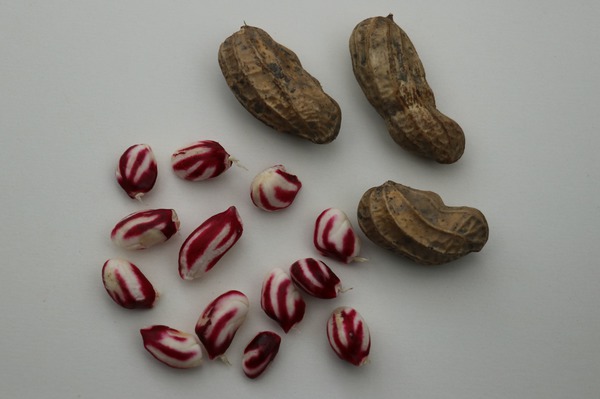
Picture: Peanut variety (Not) Just Peanuts® Justbehappy®
Short description:
- Pods/nuts: large pods with large nuts with an attractive and surprising red/white colour
- Yield: small to medium yield
- Planting: early May
- Harvest: in September, as soon as the plant is only 50% green
(Not) Just Peanuts® Justwhite®
With its ivory-coloured seed coat, the peanut variety Justwhite® is also a real eye-catcher. Even when fresh, the small nuts are already extremely aromatic. Besides the Justpink® variety, Justwhite® forms the most pods per plant. With over 100 pods, this gives a total yield of well over 200 rather small nuts. However, the missing size of the nuts is compensated by the high fertility and the very good quality of the nuts.

Picture: Peanut variety (Not) Just Peanuts® Justwhite®
Short description:
- Pods/nuts: the smallest pods and nuts in the assortment, but extremely high-yielding
- Yield: a high number of nuts, the yield per kilo is rather average
- Planting: in May, as early as possible, if possible in light soil
- Harvest: early harvesting is necessary, even when the plants start to weaken
- Special features: if harvested too late, Justwhite® has a tendency to germinate or rot back in the pod, but early harvesting avoids this
Young plants and production
Unfortunately there is only a very limited amount of young plants this year. Therefore the Lubera peanut assortment will only and exclusively be offered in Lubera’s online shop. Young plants for pot plant production will be available from March 2021 at the earliest and probably also only in limited quantities. However, if we have already aroused your interest in this exotic plant species, it is worthwhile to let us know your desired quantities by August 2020.
From a production point of view, peanuts are a rather short crop if the climatic conditions are suitable. Assuming a final pot size in the range of 1 - 1.5 L, the peanut plants need about six weeks at a temperature of 16 - 18°C until they are ready for sale. That means the following: if you count back from a planned sales date at the end of April to the beginning of May, this indicates a potting date in the middle to the end of March.
